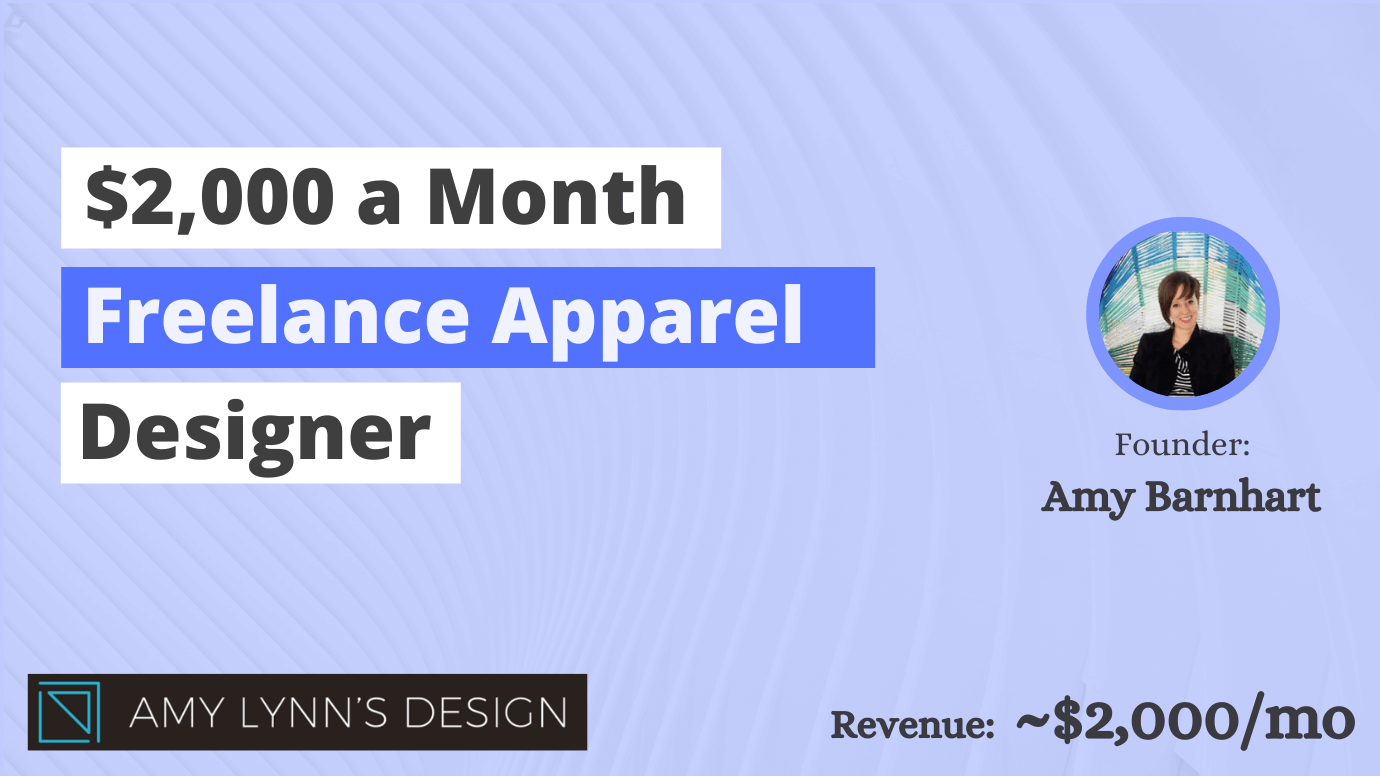Hi! Who are you, and what are you currently working on?
My name is Amy Barnhart and I’m a freelance apparel design and developer focused in menswear.
My job is helping growing lifestyle and golf apparel startups, getting them from design to production ready samples.
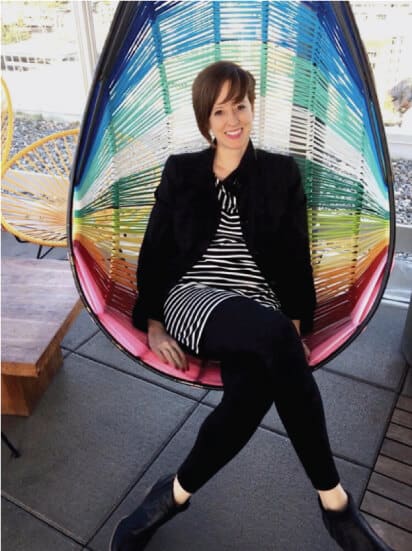
We collaborate on design, and I handle the “tedious technical stuff” for them so they can focus on growing their business.
I work with a lot of brands that are in an in-between phase.
They’re doing great, but as they grow, the way they’ve been working starts to feel messy and not scalable.
They don’t come from an apparel background, so the process feels tedious and technical and they’re not sure what to do.
What they need is a more industry standard ways of working, but they’re not ready to hire a full-time employee with the experience to help them yet.
Because I have a background in the apparel industry, as a freelancer I can step in and basically transform their design and development process.
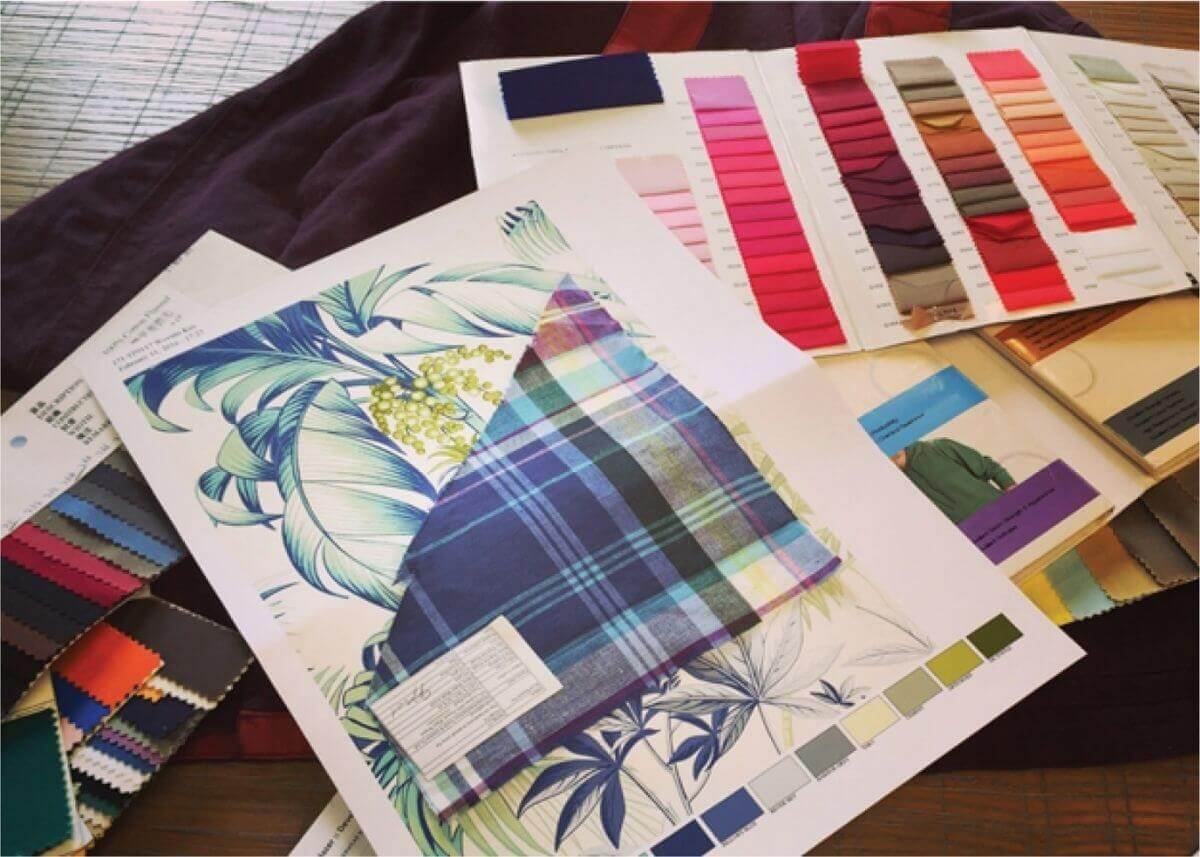
(Swatches, print, and other trims used to “trim out” a tech pack)
This gives them the organization they’ve been missing, the technical direction they need to quickly give specific feedback to their factories, and the freedom to develop their apparel at any factory they want (rather than feeling trapped at one place), without the commitment of a full time employee.
What’s your background, and what inspired you to start your business venture?
Before I started my business, I was a menswear designer at a big company. I loved my job and I had no desire to leave or strike out on my own.
Then I had a baby, and that stuff they tell you about a kid changing your priorities is for real.
I needed a job with work life balance and knew something needed to change for me to be happy. Long story short, I quit to freelance and have more time with our family.
Now I’m having a lot of fun helping clients without an apparel background grow their businesses.
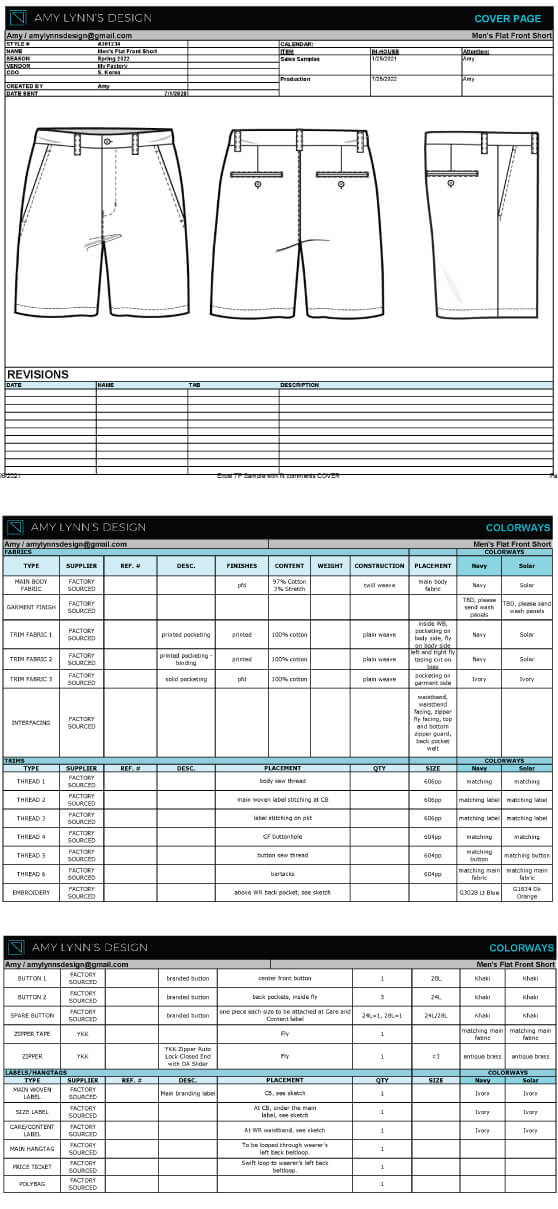
(The first few pages of a tech pack, the “blueprint” your factory needs to build your garment)
Working with smaller brands where you can really come in and help them with knowledge and resources that they just don’t have feels amazing. I genuinely love helping my clients.
How did you get started? What did the early days look like?
When I first started, along with the excitement of a new adventure, was absolute terror that this wasn’t going to work.
I was lucky to be in the beta group for a freelancing in fashion class (more on this later). The class and instructor were incredibly helpful, and I found my first clients quickly.
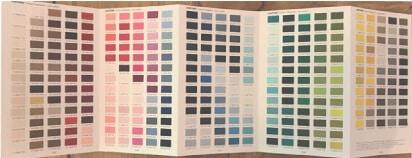
(Pantone cotton swatches used for apparel design)
It all went fast, and I started to wonder why I wasn’t freelancing as a side gig all along.
I remember saying to my husband, “Did you know, that if you email strangers on the internet, they’ll talk to you on the phone and eventually pay you to help them with a project?”
My mind was blown that this was a thing. It felt like making money out of thin air, or a video game where you got rewarded for a mix of skill and luck.
How have you grown your business venture?
I started out by cold email pitching menswear brands that I liked and lined up with aesthetically. This worked well for me, and I built up a client base with repeat work and referrals.
My growth strategy now is a combination of doing a great job for my clients, so they hire me repeatedly and refer me to their friends, and marketing.
My marketing strategy was formed by a business class I took that was very helpful in giving me direction.
Right now, I’m working on moving past being what I think of as an “individual contributor” freelancer and running things more like a business.
Building an email list and becoming a resource to potential clients and others in the industry through my blog, while also improving my SEO.
The biggest thing that’s helped me with my growth is listening to my clients and playing to my strengths.
By listening to my clients and asking questions I learn ways I can better help them (and other potential clients) and make their lives easier.
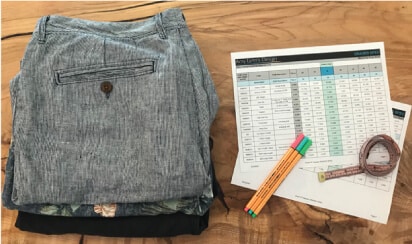
(Prototype shorts and tech pack)
By playing to my strengths (instead of fighting my weaknesses) I show up as a genuine person, and attract the right kind of clients for me, the kind of clients I love to work with and who I can do my best work for.
What is 1 small but powerful tactic you implemented that helped you achieve success? How did it make a difference?
I always follow up. Both with current and potential clients. I do what I say I’m going to do, and I stay in touch with people.
I’ve been told over and over again that that’s why I was hired, the client felt that they could trust me before we’d even worked together.
This gets me new clients, helps me retain them, and earns me referrals.
What is 1 of the biggest challenges you faced during your business journey, and how did you overcome it?
I’m so tired of talking about covid, but that’s the answer to this question. It turned our childcare situation on its head, and we became one of those families juggling work and kids with everyone at home.
I never considered quitting work, but there were some low points. Even jobs that have a lot of free time have tough days.
Luckily as a freelancer I was able to fit my work around being with our son, but it limited the amount of work I was able to take on, and definitely wasn’t the amazing work life balance I was going for when I quit my job.
I got through it just by persevering. I took all social media off my phone so I wouldn’t be tempted to waste time scrolling when I needed to be working and tried (and often failed) to stay off my work email when I was spending time with our toddler.
I got a meditation app and started meditating to make the transition of going from hanging out with a two-year-old to working and talking to clients easier.
I learned how important it is to have a separation between work and home, which can be extra challenging when you work at home and you’re your own boss.
It’s important to take breaks and take care of yourself.
When you’re tired you make mistakes, so it’s self-care, but it’s not just for you. It’s important that you’re taking care of yourself so that you can do your best work for your clients.
What is 1 new or unusual trend showing up in your industry that you’re paying attention to?
Everyone is talking about sustainability right now in the apparel industry. Most people agree it’s an important shift that needs to happen.
It would be great to see this embraced on an even broader scale and I’d love to see it expanding into a focus on Fairtrade fashion.
What is the biggest factor that separates successful people from people who fail or never get started?
Waiting until you’re “ready” to start.
The pitch emails I sent to find clients when I started are so embarrassing to read now, and I didn’t even think they were good at the time.
But I sent them anyway because you’re never going to get it perfect the first time, and I got work from those first pitches.
Another example is my blog, which was mortifying when I started it and realized people were actually reading it.
My first posts aren’t great, but they got the ball rolling and I’m getting better at it as I go.
If I’d waited until I felt good about my first post, it still wouldn’t be up and my average search position would still be on the 100th page.
What advice would you give to someone just getting started?
I think the best advice I could give to someone starting out is to not stress about taking breaks when you need them.
This is something I’m still working on getting better at. I had a conversation recently with a friend who also works for herself and asked if she was ever free during the workday to get together and she said “definitely, my boss is pretty chill.”
And I just thought “is she? That sounds nice. Mine never thinks I’m working hard enough.” But I’m learning that working like that burns you out and it’s not sustainable.
I’d also say, when you take a break don’t feel guilty about it because then you’re not really giving yourself a refresh – you’re wasting your break.
How are things going today and what’s next?
Things are going well right now. As of the time I’m writing this, I’m working on banking blog posts and emergency-time-off proofing my business.
I’m finishing up several projects for golf and lifestyle brands that I’m working with, including a brand-new startup golf brand that I’m excited to be partnering with.
What have been the most influential podcasts, books, or other resources?
First I have to mention the Successful Fashion Freelancer Podcast. Heidi, the host, teaches a freelance class that I took, and I credit her resources for helping me be immediately successful in this new venture.
B-School with Marie Forleo has also been huge in helping me learn how to run my freelance career as a business.
Not coming from an entrepreneurial background or ever having interest in doing my own thing before, her class gave me marketing direction and too many “ah-ha” moments to count.
The Sales Maven Podcast with Nikki Rausch helped me turn my discovery calls (the first call with a potential client) into a targeted and structured conversation, rather than the hot mess they were in the beginning.
Lastly, my clients have taught me so much about the startup world and the way manufacturing works on a smaller and faster scale.
More than anything else, listening to them has helped me be better at my job and serve my clients better.
Where can we go to learn more?
- You can check out my website
- Find me on LinkedIn
- Connect with me on Instagram @amylynnsdesign
- Email at [email protected]
- You can also sign up for my email list for weekly apparel industry tips and tricks.
Thanks for reading and good luck with your journey!
Jack Brewer is passionate about all things personal finance, and enjoys testing out new side hustles and investing strategies.
